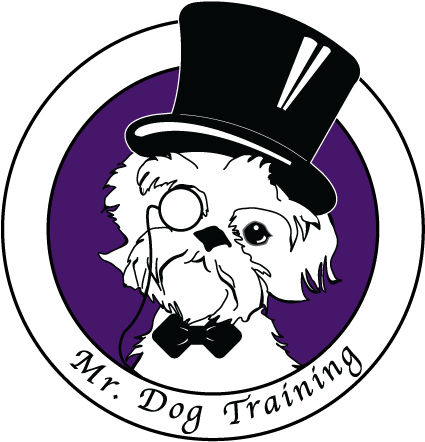A Tired Dog is a Good Dog, or are they?
This might raise some hackles—but it’s worth saying: what feels like “good exercise” to us doesn’t always feel the same to the dog at the other end of the leash.
We’ve been taught that tired dogs are good dogs, that physical activity is a fix-all, and that a solid jog or bike ride together checks all the enrichment boxes. And sure—movement matters. But not all movement is created equal, especially when your dog doesn’t get a say in the pace, route, or even whether they want to come along in the first place.
So is a tired dog a good dog or just a tired dog?
I don’t know about you, but when I’m tired I don’t really feel that good.
At a glance, jogging with your dog, long days at daycare, long sessions of fetch, hours at the dog park, or biking while they trot alongside looks like a win-win. Fresh air, shared activity, bonding time. Except… maybe not.
Let’s zoom out for a minute.
Why Forced Movement Doesn’t Always Work for Dogs
Dogs aren’t built for sustained, straight-line movement at human speeds. They move in bursts—start, stop, sniff, repeat. They pause to investigate a stick. They zigzag after smells. They have absolutely no interest in your Apple Watch fitness goals.
So when we leash them up and set a pace, they’re stuck in a game they didn’t agree to. And depending on how they’re attached—especially with a collar—they’re also dealing with pressure, pulling, and a total loss of choice. Not a wellness plan for their brain or their body.
And here’s the tough part: dogs are generally cooperative little weirdos. They’ll try to keep up even when they’re uncomfortable, tired, or in pain. They won’t necessarily stop. They won’t say “hey, this feels bad.” They'll just try harder—until they can't.
That means we might not know we’re asking too much until we’ve already overdone it.
Dogs who have had too much intense exercise can often look very similar to dogs who have not had enough exercise. I see this a lot in young puppies and adolescent dogs; well intentioned dog guardians are overexercising their dogs because they’ve heard “a tired dog is a good dog“.
This causes dogs to become overtired and then have a meltdown, the equivalent of a toddler laying face first on the grocery store floor, kicking and screaming because their parent insisted on trying to squeeze a grocery trip in when the child needed a nap and probably a snack.
This meltdown looks like a dog who has a ton of energy, causing the dog’s human to think the dog needs more exercise, and in attempts to do so causes the dog to become even more overtired/overaroused/overstimulated, causing their behavior to get worse and worse. It’s a vicious spiral downward from there.
Here’s What Forced Exercise Can Lead To:
Joint strain or soft tissue injury
Overheating and exhaustion
Emotional shutdown, overwhelm, or frustration
Disconnection from you (the walk becomes a chore, not a joy)
Even if they’re physically able to keep up, that doesn’t mean they’re thriving. And it definitely doesn’t mean they’re enjoying it.
And what if we start creating “super athletes” who become so physically fit that they will require an obscene amount of cardio exercise to make a dent in their energy levels. How can you maintain that?
So… What Does Support Your Dog’s Wellbeing?
If your goal is to help your dog move their body and feel good doing it, here are some more dog-centric options:
🌿 Decompression Walks
Sniff walks on long lines, in quiet areas, where your dog gets to decide where to go, how fast to move, and how long to investigate the grass. It’s regulating, soothing, and deeply satisfying.
🧠 Enrichment Games
Mental work counts. Scatter feeding, movement puzzles, shredding boxes, chewing, food dispensing toys, sniffy games—these relax dogs in a sustainable, healthy way. Tired doesn’t always mean tongue-out panting. Sometimes it means soft eyes and chilling next to you.
🐾 Off-Leash Time (Where Safe)
If your dog loves to run, let them run! But off-leash (in a secure, fenced in area or on a long line) so they can stop when they want to. It’s not about not running—it’s about letting them choose when and how to do it.
🪵 Proprioceptive Play
Let them climb over a log, walk along a bumpy path, balance on a rock. These “little adventures” build strength, awareness, and confidence—especially for young or anxious dogs.
🚶♀️ Slow, Connected Walks
This might not feel like “exercise” to you, but slow walks that let your dog sniff, meander, and check in with you are often the most regulating thing you can do together.
The Bigger Picture
The goal of exercising your dog shouldn’t be to tire them out at any cost. It should be to support their physical, emotional, and behavioral wellbeing—and to build a relationship where they feel safe, seen, and respected.
Movement does matter. But so does agency.
Let’s make movement feel good again—for both of you.
Sara Sokol is owner of Mr. Dog Training in Brunswick Maine; A positive reinforcement dog training facility, offering both virtual and in person classes, that has been voted best training in Maine.
